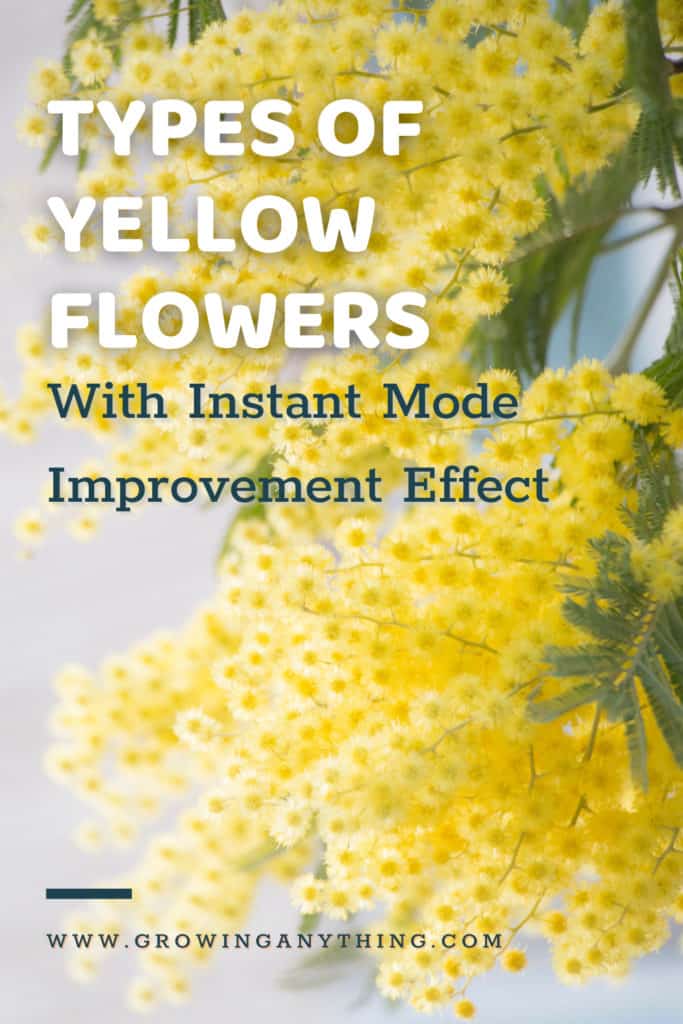44 Difference Types of Yellow Flowers
Are you eager to discover all beautiful types of yellow flowers? Stay with me and get the best recommendations for yellow blooms!
There is something in the yellow flowers. They remind people of the sun, and bright blooms can improve their mood with bright blooms and charming looks! Also, yellow stands against green foliage and can be mixed easily with other flowers in your garden or indoor plant’s display!
You can always have a dash of summer around you with yellow flowers. Check the most attractive yellow flowers you can grow!
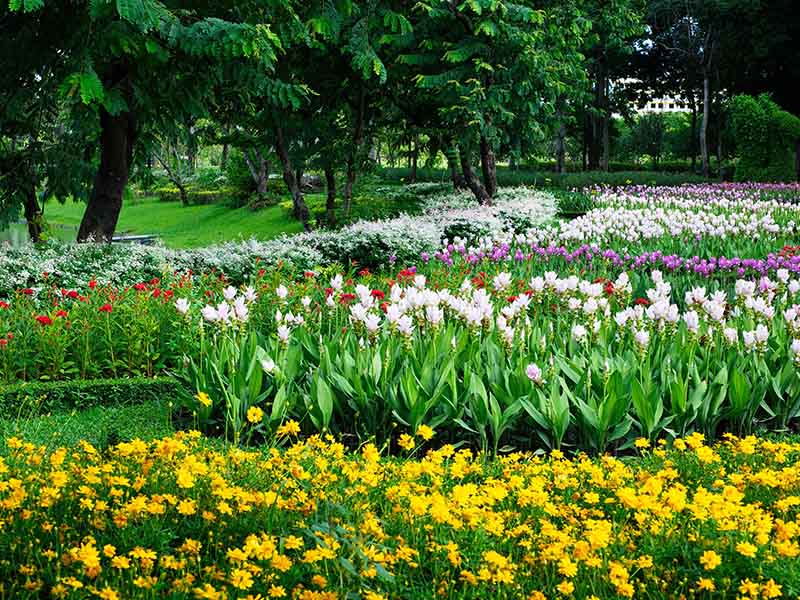
1. Begonia
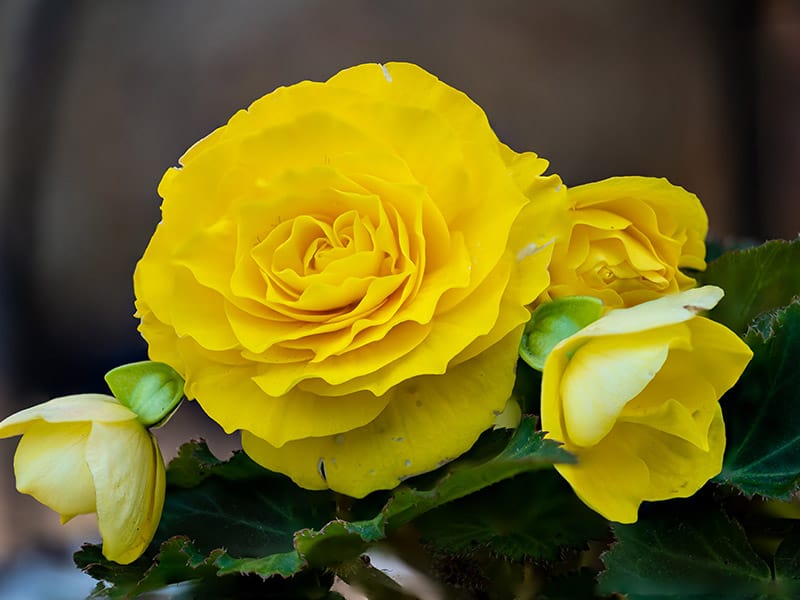
The most famous cultivar of yellow Begonias is available in nurseries under the name Nonstop Yellow. Start them in spring, after the danger of frost has passed. Yellow Begonias are remarkably easy to grow. Choose well-draining, fertile soil, and partial shade! Your lovely yellow blooms will need winter protection.
The easiest way to do that is to dig out the tubers and store them indoors until spring comes!
2. Primrose
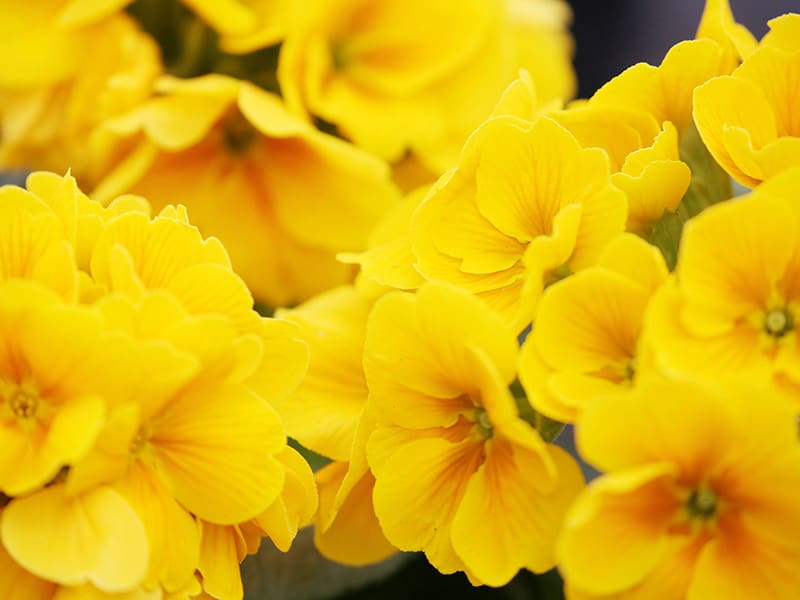
Did you know many people consider Primrose as a weed, because of how easy it is to grow? Yellow Primrose thrives in dry and open spaces. All you have to do is sprinkle the seeds and let them be! The plant will develop in all conditions, except overly wet soil.
Yellow Primrose or Evening Primrose is a biennial plant. Overall, it is not very invasive, and it will stay under control in your garden.
3. Marigold
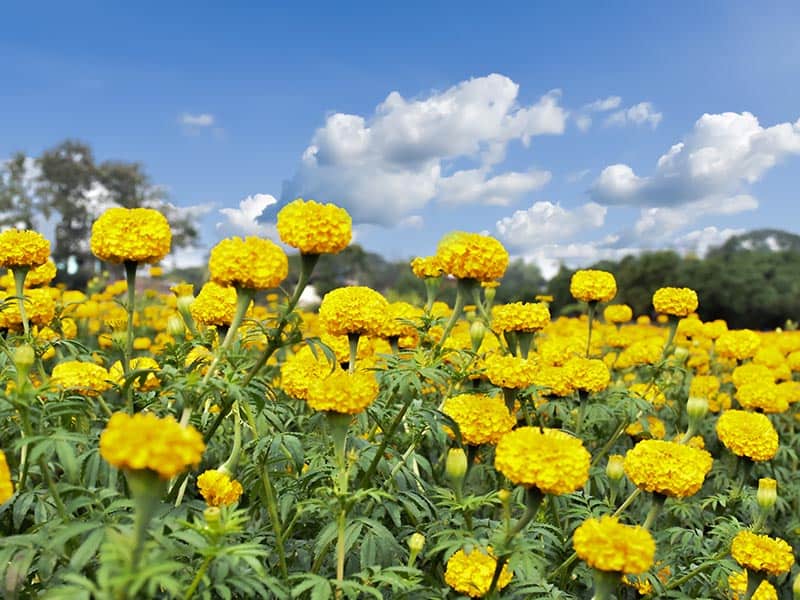
Yellow Marigold is such a cheerful flower to pick for your garden. The ideal time to plant most Marigold varieties is mid-spring to early summer. If the weather is warm, you’ll notice sprouts in a week and the first yellow blooms in eight weeks.
Marigolds grow best in full sun location and can tolerate dry spells. Also, even though Marigolds don’t need deadheading, you can encourage new blooms by removing dead flowers!
4. Carolina Jessamine
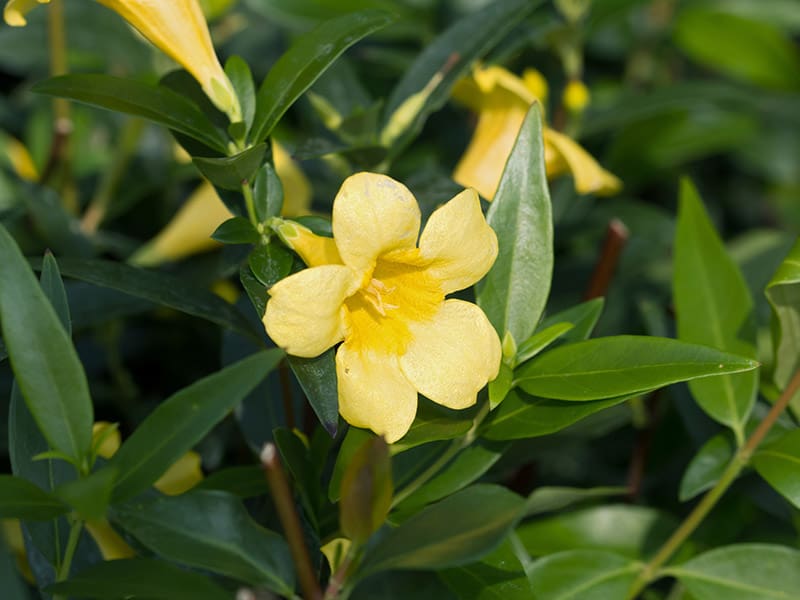
You can pick Carolina Jessamine if you live in USDA hardiness zones from six to nine.
Carolina Jessamine looks beautiful in containers or as a ground cover. Some people also choose to grow it on a trellis for a spectacular display of yellow and green!
This attractive yellow flower is poisonous. Therefore, keep it away from children and pets! However, because it is easy to grow and can help prevent erosion, Carolina Jessamine is a very popular yellow flower.
5. Carnation
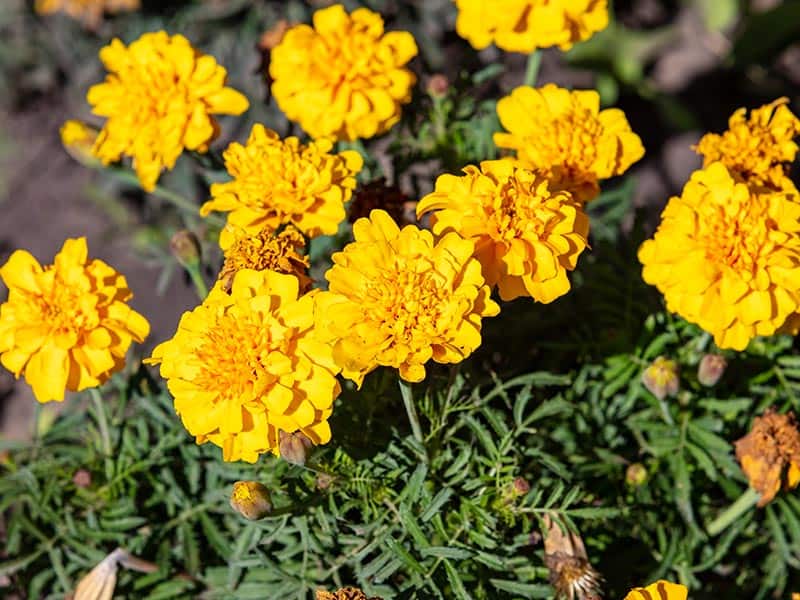
Yellow Carnations are easy to grow, as long as you pick a location where your plants will be exposed to bright light for four to six hours. In the shade, Carnations struggle to develop and are prone to diseases. Other growing requirements include well-draining, slightly alkalized soil.
Carnations look spectacular in flower beds and are some of the most common cut flowers. They remain fresh for a long time!
6. Yellow Rose
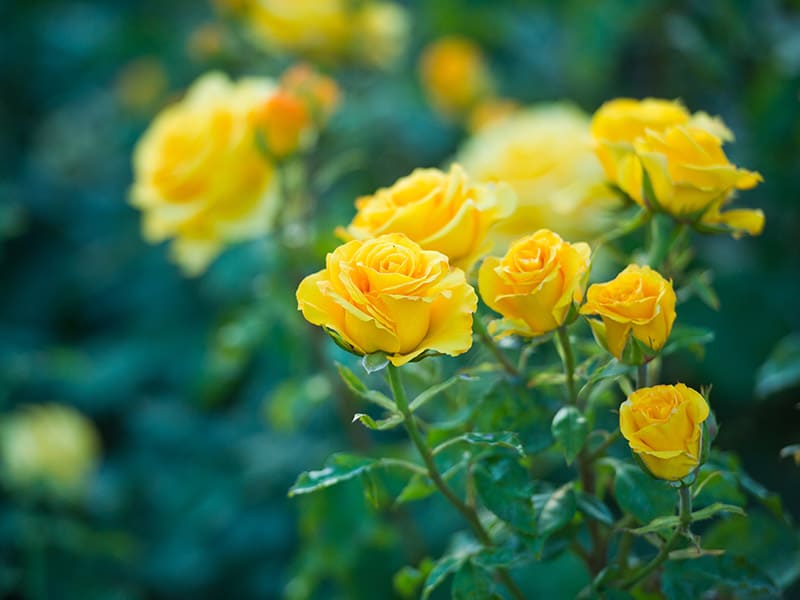
Yellow roses symbolize friendship and are a beautiful addition to every garden. You should plant them somewhere where your roses will be protected from harsh afternoon sunlight. Otherwise, your Yellow roses may get scorched.
Yellow roses look spectacular when combined with other roses, such as purple or orange. Don’t forget to cut them back in late winter to prepare your roses for the new season!
7. Chrysanthemum
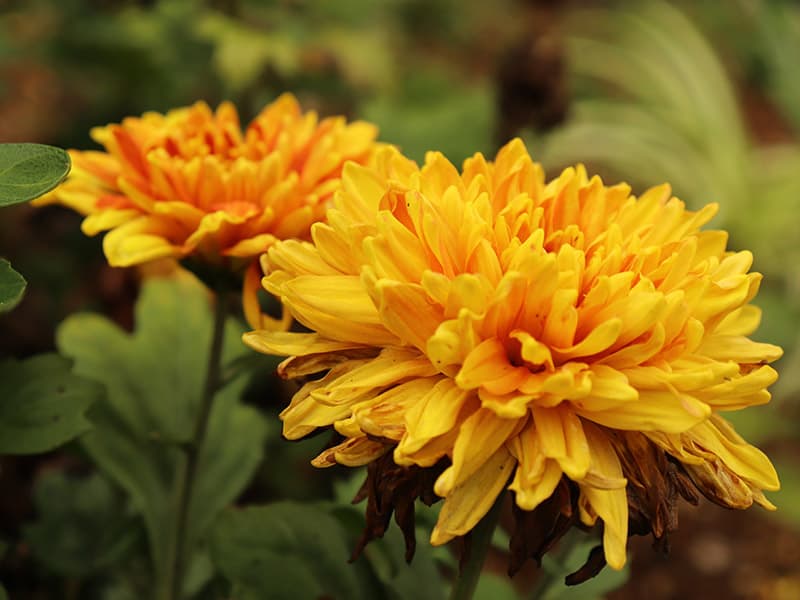
Chrysanthemums are very popular flowering plants with bright blooms! Pick well-draining soil in a sunny spot. Keep the soil moist and Chrysanthemums protected from the wind. You can also add compost and well-rotted manure to boost the development of your Chrysanthemums.
Chrysanthemums require staking and removing side shoots for best results.
The easy way to keep Yellow Mums blooming the entire season
8. Zinnia
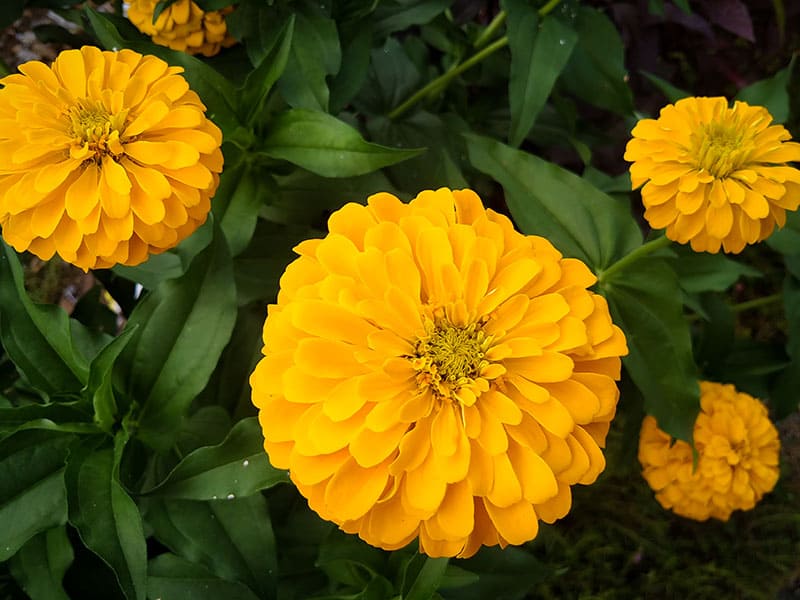
Zinnias bloom in different colors, including yellow. These lovely flowers are low-maintenance and thrive in different growing conditions.
You can start Zinnias from established nursery plants or from seeds. They look beautiful as border plants or cut flowers.
Zinnias grow fast in full sun and well-draining soil.
9. Hellebores
Yellow Hellebores might not be as bright as some other flowers on the list, but they are equally charming. One of the most prominent Hellebores cultivars, Golden Sunrise, features a bright red center with pastel yellow petals.
Yellow Hellebores grow in fertile and well-draining soil. You can plant Hellebore around garden borders, in a container, or underneath shrubs. Bright sun or partial shade is recommended. Also, remember to avoid transplanting your Hellebores, because it can stress plants too much so they will die.
10. Pansies
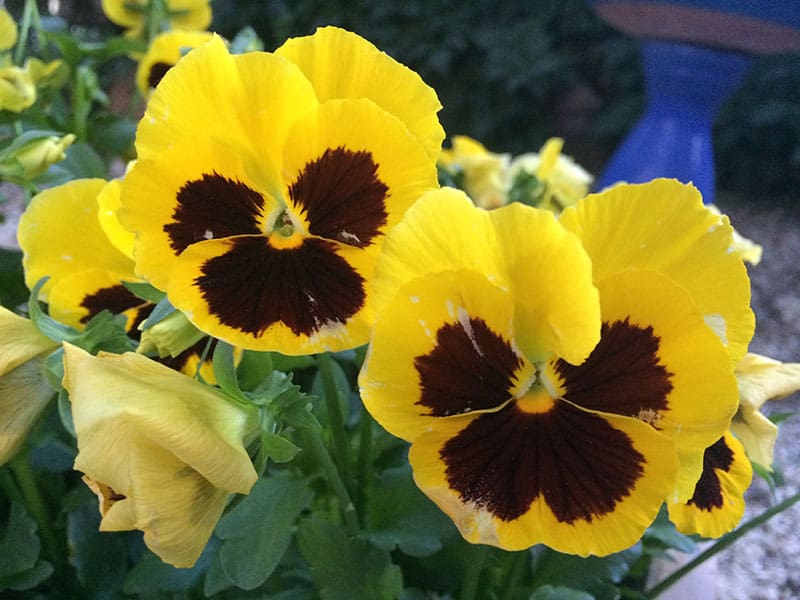
Pansies are available in a variety of colors, including bright purple and yellow as the two most common. Yellow Pansies are wonderful in spring and fall gardens, and they aren’t particularly challenging to grow.
These lovely bright flowers need moist, humus-rich, and well-draining soil. Pansies can adapt to full and partial sun, but they need cooler weather to flower.
11. Daffodil
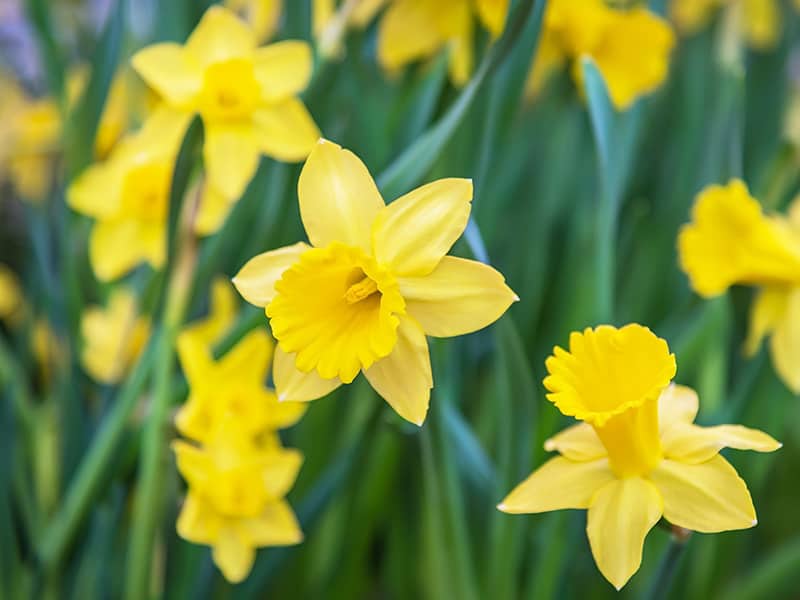
Daffodils are easy bulbous plants to grow. You can start them in your garden in full sun or partial shade locations. All you have to do is dig the hole about five inches deep and put the Daffodil bulb inside. The pointy end of the bulb should face up! Water well and wait for the warmer weather to admire your Yellow Daffodils!
12. Daisy
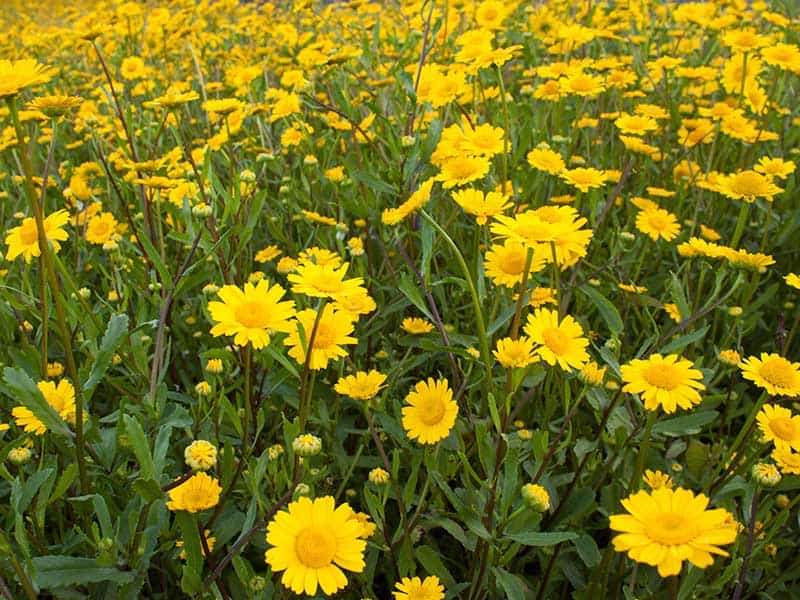
Yellow Daisy is such a classy flower to have in your garden! Daisies are easy to grow, but you should still know how to prep the soil before starting them. Loosen the soil as the first step and add fertilizer to the soil to help your Yellow Daisies establish easier.
After that, you can plant the seeds or plants and water them occasionally.
13. Yellow Hibiscus
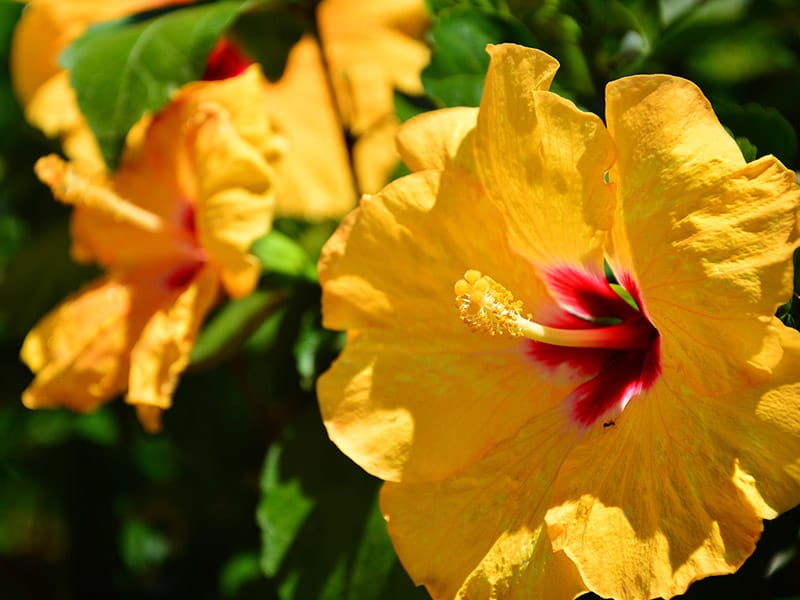
If you have never grown Hibiscus before, here is a trick to apply: soak the bulbs in water for 24 hours before planting them! If you’ve decided to grow Yellow Hibiscus from seed, soak them in water for five hours.
Once the Hibiscus starts to grow, add mulch around the base. It will help the soil to remain moist and control erosion. Don’t forget to cut the old flowers back to encourage reblooming!
The best way to prepare Yellow Hibiscus for the summer season
14. Ranunculus
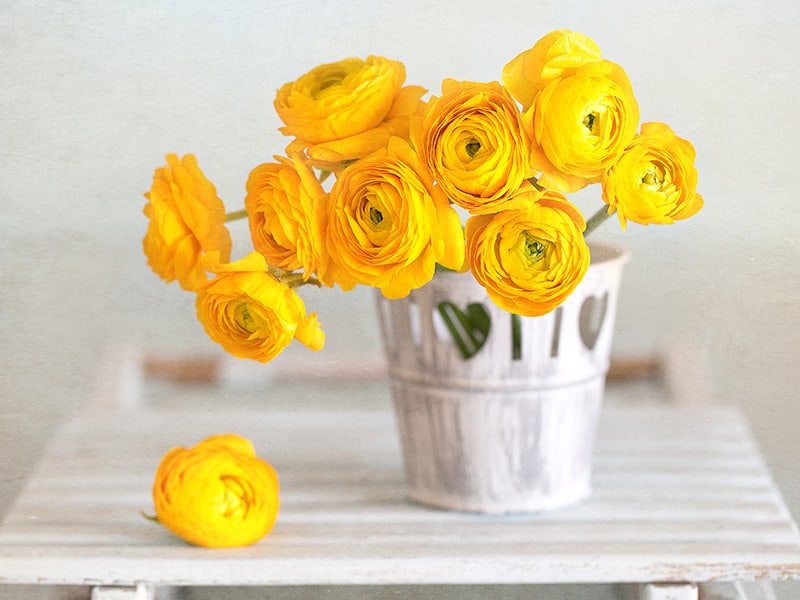
Yellow Ranunculus is a delightful cut flower! You can combine it with other flowers or make an arrangement consisting of only Ranunculus.
Yellow Ranunculus is hardy in USDA hardiness zones from eight to 11. Outside these zones, gardeners grow Ranunculus as an annual flower.
It requires a lot of light and excellent drainage to grow.
15. Dutch Hyacinth
Dutch Hyacinth features large and striking, heavily fragrant blooms. The ideal time to plant Yellow Dutch Hyacinth is fall, so the flower can develop during colder weather and shine in the spring.
You can grow the Dutch Hyacinth where other bulbous flowers cannot survive. It doesn’t mind dry soil and extra warmth!
16. Iris
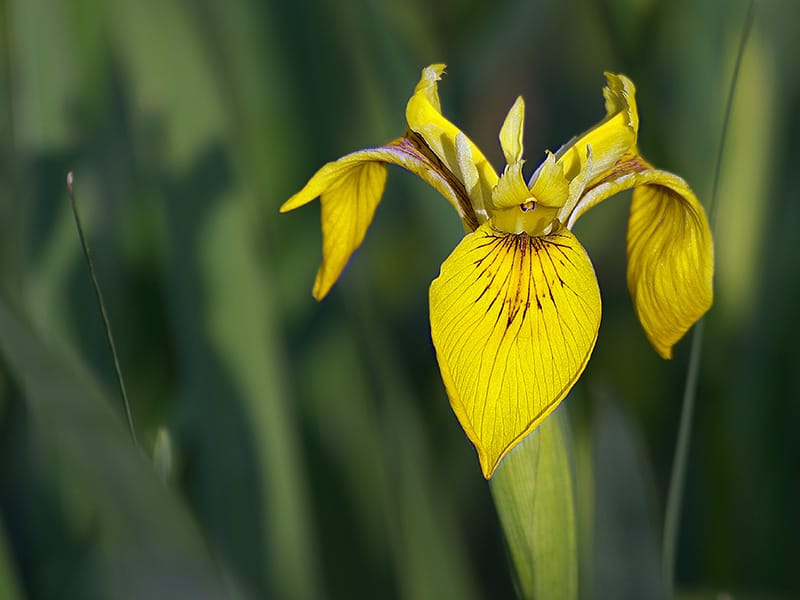
Yellow Iris is an attractive and unusual flower that grows best when rhizomes are planted in shallow water. The average height range for Yellow Iris is between eight and 36 inches.
Yellow Iris is a water-loving plant. It needs moisture to thrive, but the soil should be fast-draining.
Overall, Yellow Iris is a low-maintenance plant. Occasionally, check to see if there are spent flowers for removal and keep an eye on the plant to prevent invasive spreading.
17. Tulips
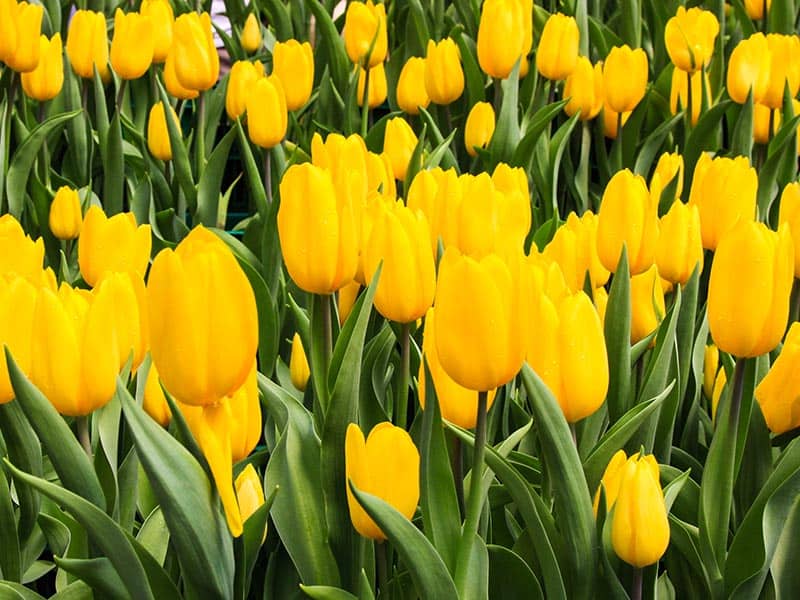
Is there something more beautiful than fields of bright Yellow Tulips? You can grow Yellow Tulips as long as you provide them with a lot of sunlight and sufficient chilling periods.
After the blooming season, Tulips go dormancy and need a chilling period to break the dormancy and wake up in the spring. So, if you live in a USDA hardiness zone from seven and above, you’ll have to assist the plants in the chilling period, because winters are too mild!
18. Dahlia
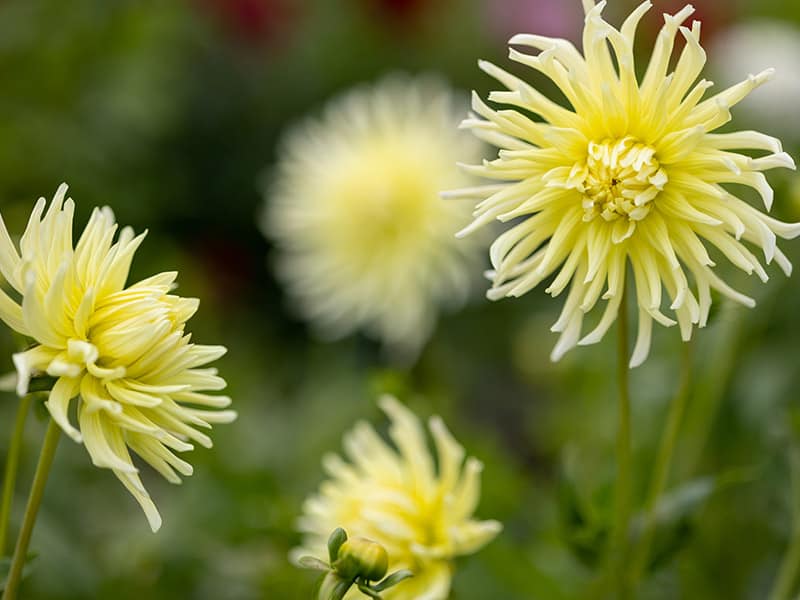
Dahlias thrive in a sunny, but sheltered spot. They need moist and rich soil to bloom in the summer! You can mix Yellow Dahlias with Canna Lilies, Verbena, or other plants for stunning flower displays.
Dahlias are available in various forms. You can plant dwarf cultivars on the borders of the garden, under the shrubs, and pick standard varieties for pots! Yellow Dahlias are also beautiful and long-lasting cut flowers!
19. Yellow Butterfly Bush
Buddleia davidii aka Butterfly Bush is a delightful flowering bush that will transform every summer garden into a magical realm of yellow and green.
Yellow Butterfly Bush attracts butterflies, hence the name, and is great to grow in your garden for other pollinators. Late autumn or early spring is an ideal time for planting Butterfly Bush. You can start it from seeds of established nursery plants.
20. Gerbera Daisy
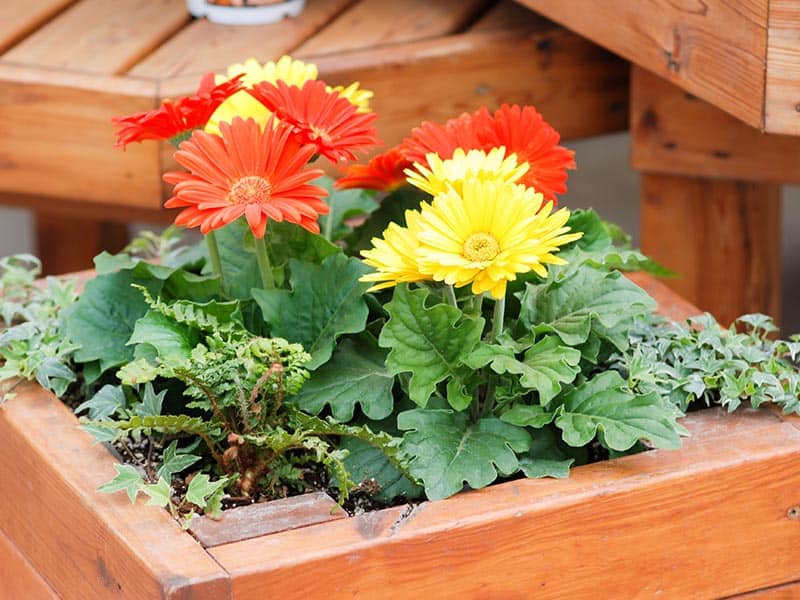
Gerbera Daisy comes in all bright colors and is always a great choice to grow in gardens. The growing requirements for Yellow Gerbera Daisy are simple – well-draining soil, plenty of sunlight, and frequent water-soluble fertilizer application.
Try to keep the soil evenly moist, but keep in mind that sogginess can kill your beautiful Gerberas. You can grow them in containers or garden soil.
Basic care for Gerbera Daisy
21. Calla Lily
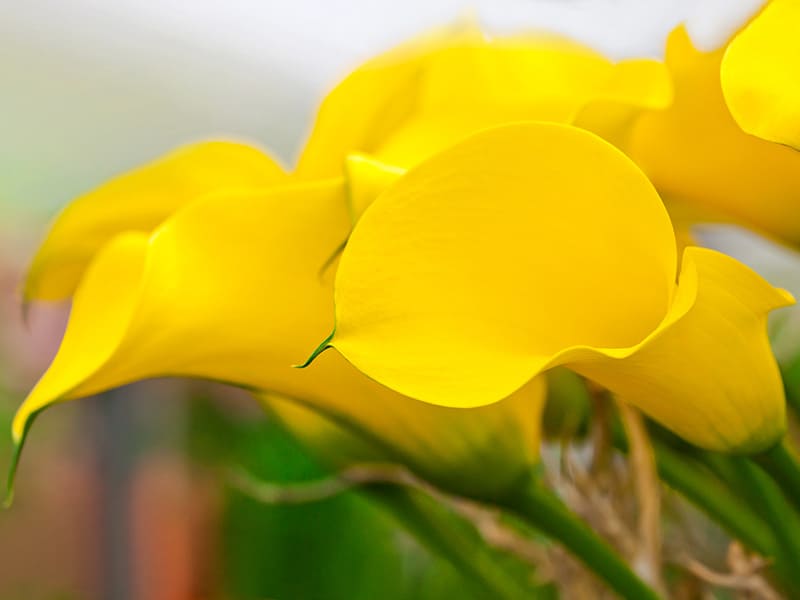
Calla Lillies are perennial bulbs known for their elegant blooms and beautiful long stems. Pick Yellow Calla Lilies for full sun or partial shade and plant them in fast-draining soil. If you live in a hot climate, partial shade is more recommended.
Calla Lilies need a lot of moisture, especially during dry spells.
However, avoid overwatering, because it can cause fungal problems and rot.
Experienced gardener shares best tips for growing Calla Lilies
22. Yarrow Achillea
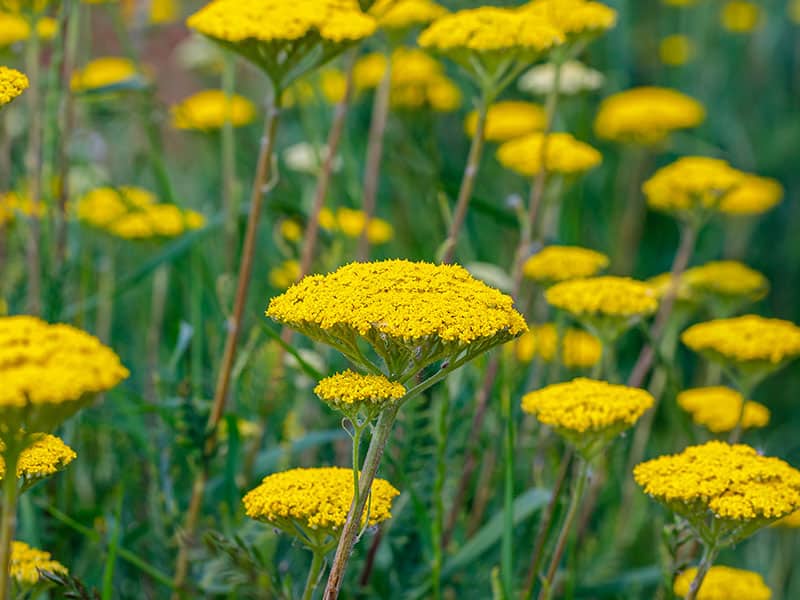
If you live in a hot and dry climate, consider Yarrow Achillea for your garden. Yellow Yarrow Achillea needs full sunlight to grow to its full potential. Without proper lighting conditions, Yarrow Achillea grows leggy.
Also, the flower won’t tolerate wet soil. Add compost to boost the nutrient value of the soil before planting Yarrow Achillea!
23. Lilium
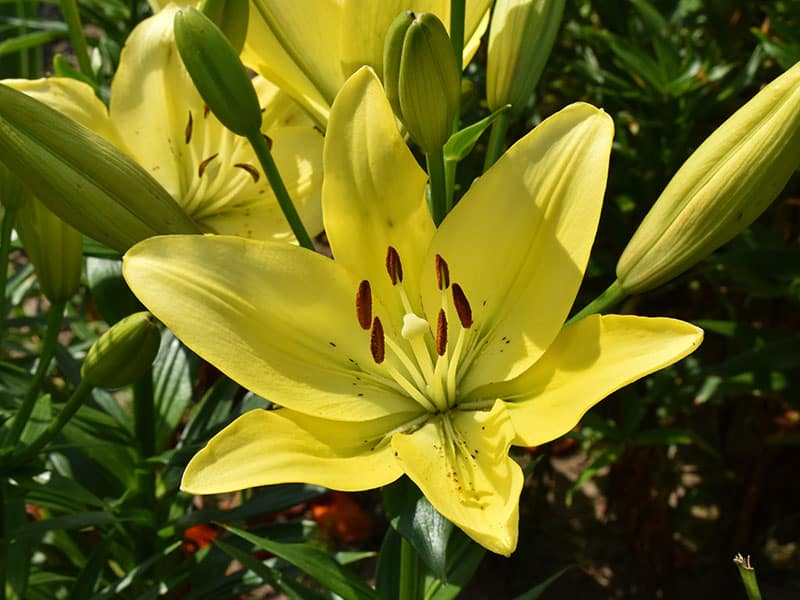
Planting Yellow Lilies requires at least an 8-inch deep hole for bulbs. Each hole should contain three bulbs which you will cover with soil and add fertilizer to help the plants establish.
You can also choose to grow Lilies in pots. Usually, a 2-gallon container is enough for three bulbs!
Even though Lilies are the world’s most famous cut flowers, cutting Lilies will stop reblooming. Therefore, always plant as many Lilies as you can to ensure the consistent supply of these beautiful yellow flowers!
24. Sunflower
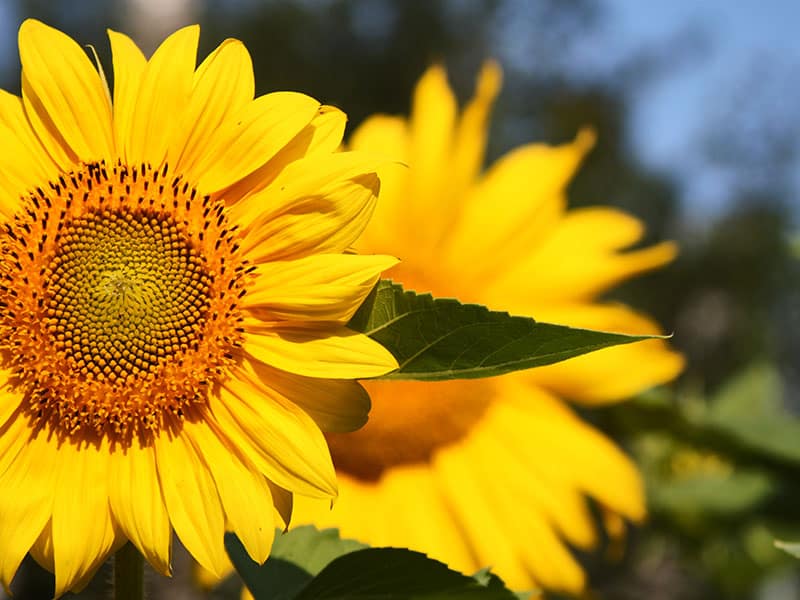
For most people, Sunflowers naturally come first to mind when thinking about yellow flowers. Good-quality soil is an excellent start for your Sunflowers. You can start them via seeds and keep the soil consistently moist.
Additional growing requirements for Sunflowers include sunny and sheltered spots! If you don’t have enough space in your garden, pick dwarf Sunflower varieties for pots.
25. Jungle Geranium
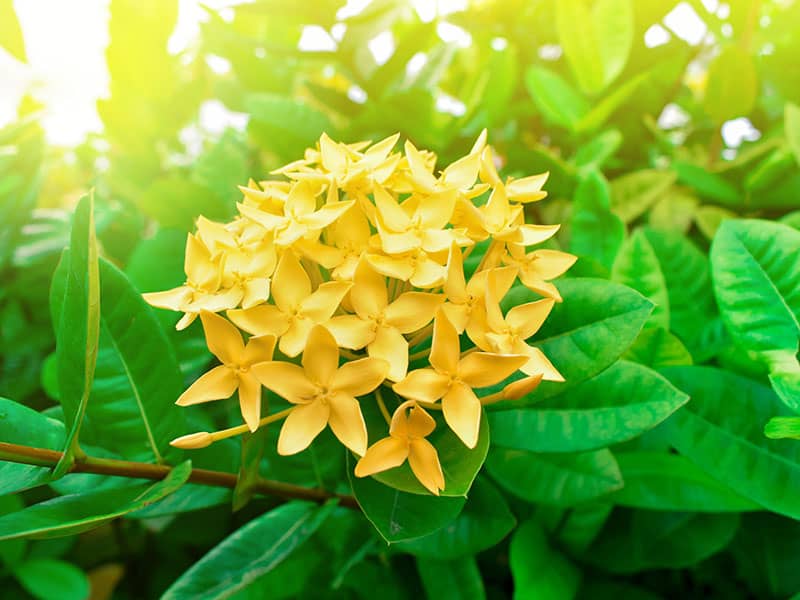
Jungle Geranium aka Ixora coccinea is an attractive yellow flower with bright, five-petalled blooms and vivid green foliage. It is available in several colors and usually grows six feet tall.
Jungle Geranium is beautiful as a hedge or screening plant. However, you can also plant it in flower beds or containers to decorate your patio!
Sunny area and medium moisture are sufficient for optimal development.
26. Daylily
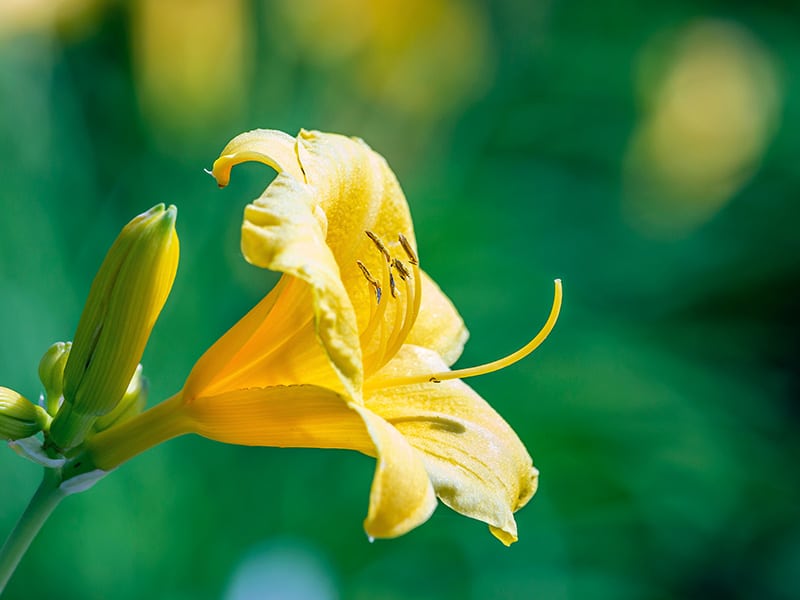
If you want a fuss-free plant, choose Daylilies! They are a great addition to gardens from zones three to nine, and adaptable to plenty of conditions. Also, Yellow Daylilies aren’t prone to pests and diseases.
Daylilies are called Hemerocallis, which translates as beauty for a day! So, most Daylilies bloom open in the morning and die when the sun sets!
27. Waterlily
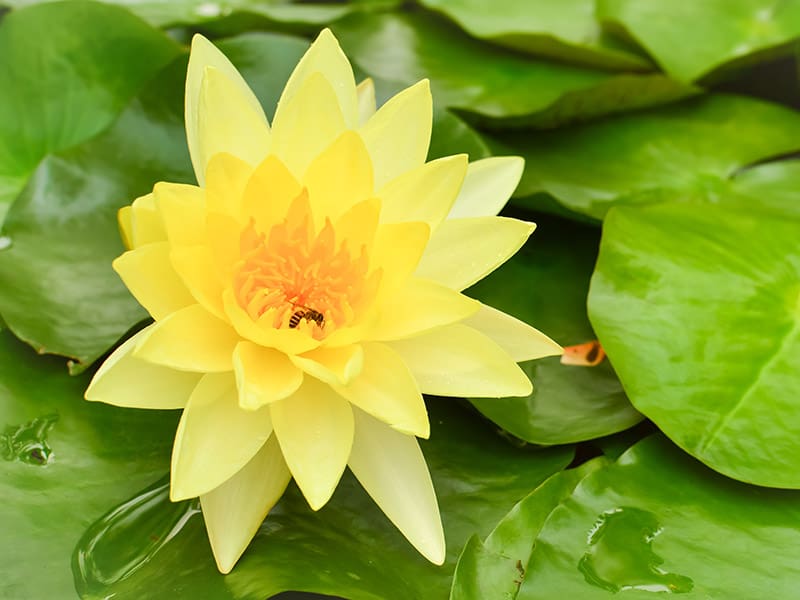
Nyphaea hollandia or Waterlily is easy to grow in still or slow-moving water, such as ponds, lakes, or canals. It belongs to wildflowers and looks most attractive during the blooming season – from June to September.
With proper care, your Yellow Water Lilies can survive in a container, on a porch! Wide and shallow containers work best. You’ll have to prepare plants well, fill the containers with soil and add gravel on top to retain moisture.
Growing Water Lily from seeds – a comprehensive guide
28. Snapdragon
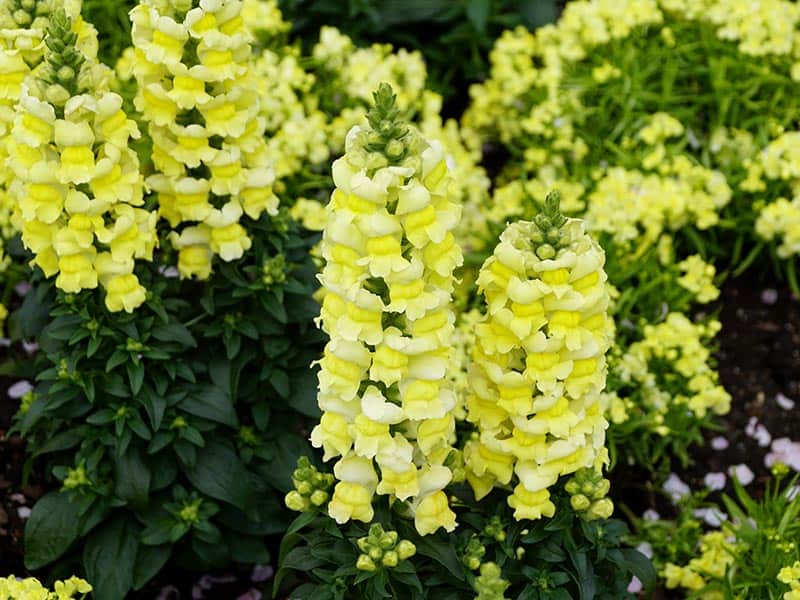
Antirrhinum majus or Snapdragon is a great choice if you want to have your garden burst with color during cold seasons. Pick a sunny area and plant Yellow Snapdragons in well-draining soil.
There are several varieties of Snapdragon. Tall varieties require stalking, and dwarf ones look especially beautiful in flower beds. Clipping one-third of the plant after blooming will prolong the blooming season!
29. Bulbine Frutescens
Bulbine Frutescens is an unusual flowering plant, often referred to as the Snake plant. It is a succulent plant, native to South Africa.
Bulbine Frutescens is a fast-grower and has a clump-forming growing habit. The charming star-shaped flowers appear in clusters in spring!
Bulbine Frutescens is also drought tolerant and easy to grow throughout the year, in various conditions! It is also frost-resistant!
30. Craspedia
Craspedia globosa or a Billy Button plant features round, bright yellow flowers which appear on tall and slender stems! You can grow it in zones from three to ten.
Pick well-draining soil for the Craspedia Globosa and add a burst of color and texture to your summer garden. Craspedia Globosa is a relatively newer type of yellow flower, which is slowly getting popular because of its low-maintenance nature and attractive blooms.
31. Coreopsis
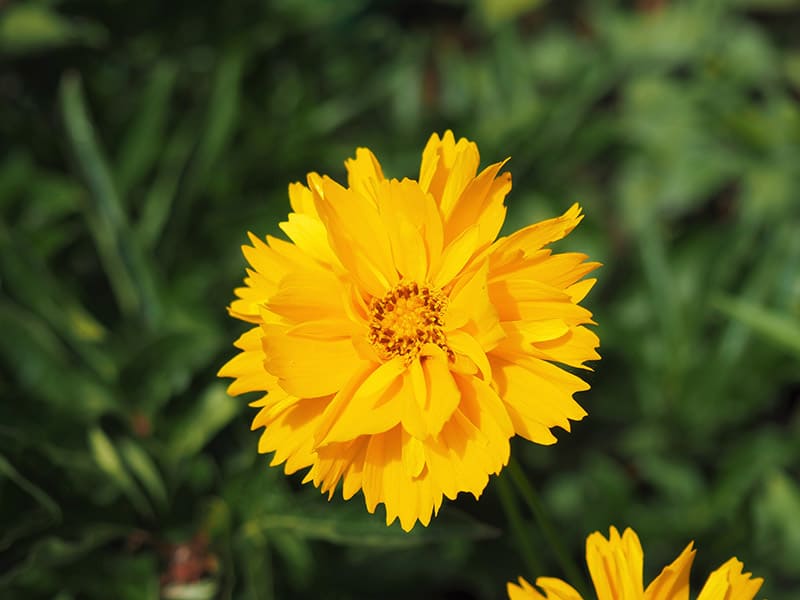
Coreopsis or Tickseed is a beautiful flower that belongs to the Aster family. Most Coreopsis varieties grow excellently in zones from four to ten. Outside these zones, you can grow it as an annual plant.
Yellow Coreopsis is a warm-weather plant that can get around four feet tall. It is easy to start from seeds or established plants from nurseries.
32. Prickly Pear
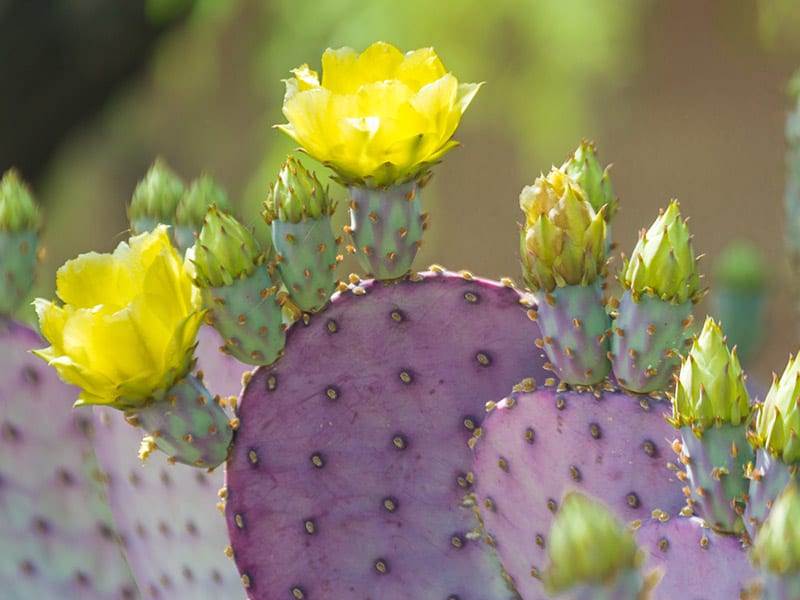
Prickly Pear is a cactus with cheerful yellow blooms and a fleshy body. You can plant it in sandy or gravelly soil mixed in a container with large drainage holes.
The lighting requirements for Prickly Pear cactus are eight hours of sunlight per day. Because it is a cactus, Prickly Pear is drought tolerant. In addition, it thrives in warm and dry weather!
When you grow it outdoors, it doesn’t need fertilizer. However, houseplants Prickly Pears will benefit from occasional fertilization!
33. Corydalis
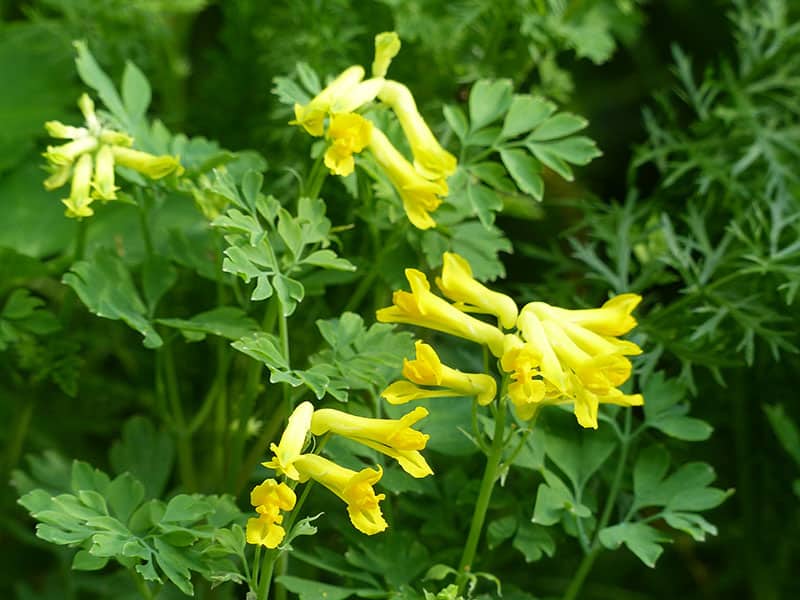
Yellow Corydalis is a delicate flower with lace-like foliage and tubular blooms. It is suitable for light shade areas and needs consistent moisture, especially during warm parts of the year. During cold weather, Yellow Corydalis need minimal moisture.
Ruch and humus soil is ideal for this yellow flower, but the plant will adapt to sandy or clay soil. Additionally, Yellow Corydalis isn’t prone to pests and diseases.
34. Freesia
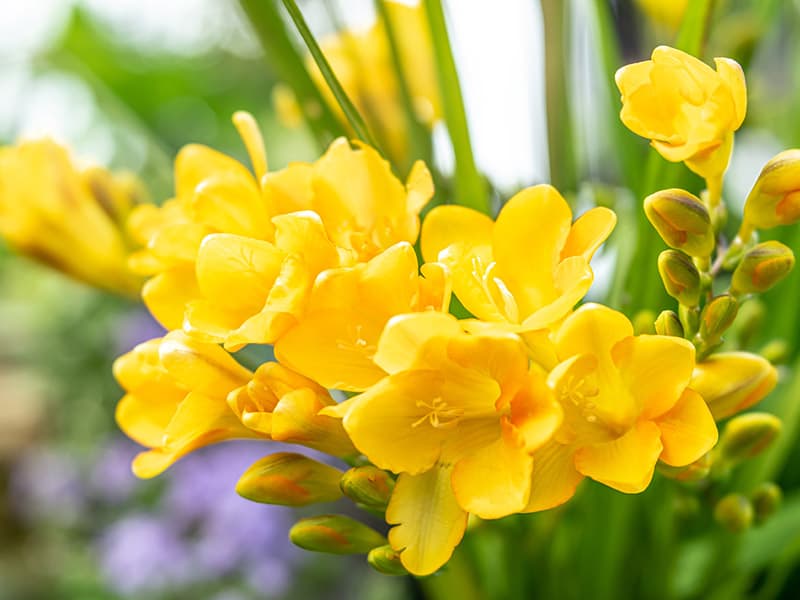
Freesias are low-care bulbs. To get the best results, you need to know how to water them. After planting Yellow Freesias, keep the soil moist. In the blooming season, weekly watering is sufficient. Then, reduce the irrigation, and let the top two inches of soil dry between waterings.
Freesias aren’t cold-hardy. Therefore, you can grow them as annuals if you live in a climate with cold winters! Additionally, Freesias love high humidity, so they might not be the best yellow flowers for dry climates.
35. Black-Eyed Susan
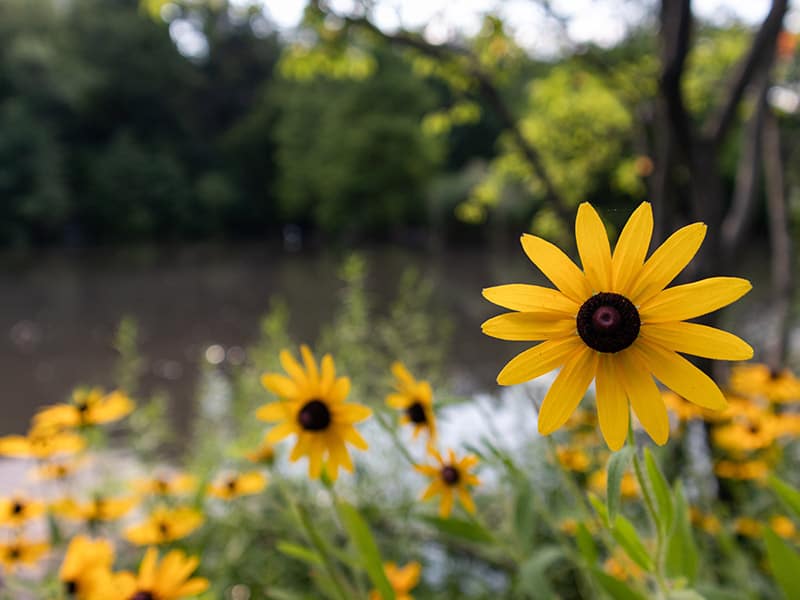
The ideal time for planting your all-time favorite Black-Eyed Susan flower is spring or early fall. After planting, juvenile Black-Eyed Susan needs a lot of water. Regular fertilizer application helps Yellow Black-Eyed Susan grow and become a focal point in your garden!
After the blooming season, Black-Eyed Susan needs dead-heading. It may encourage additional blooms!
36. Goldenrod
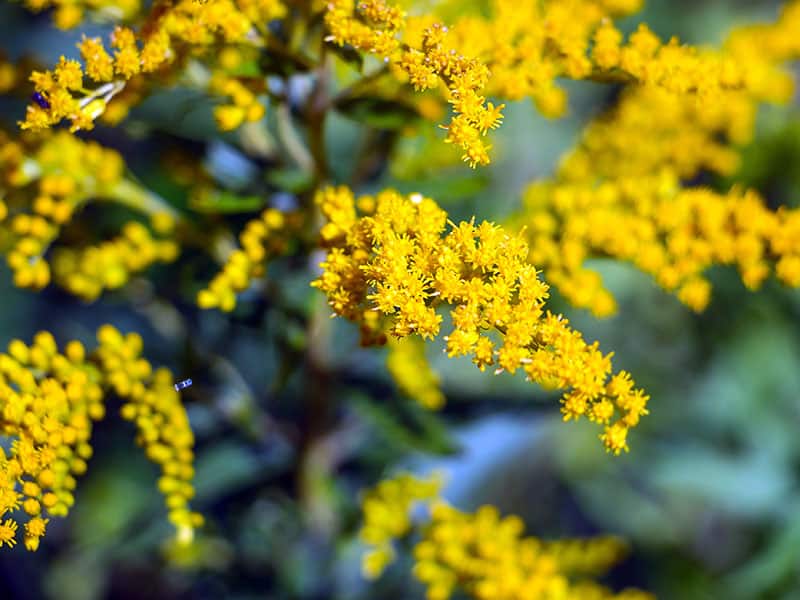
Goldenrod is a lovely wildflower, which can be easily grown from seeds. You can sow the Goldenrod seeds outdoors in spring or autumn. The alternative is to start seeds indoors two months before the last frost date. The warm indoor temperatures will boost the germination rate so your Goldenrod will be ready for transplantation in the early spring.
37. Yellow Cestrum
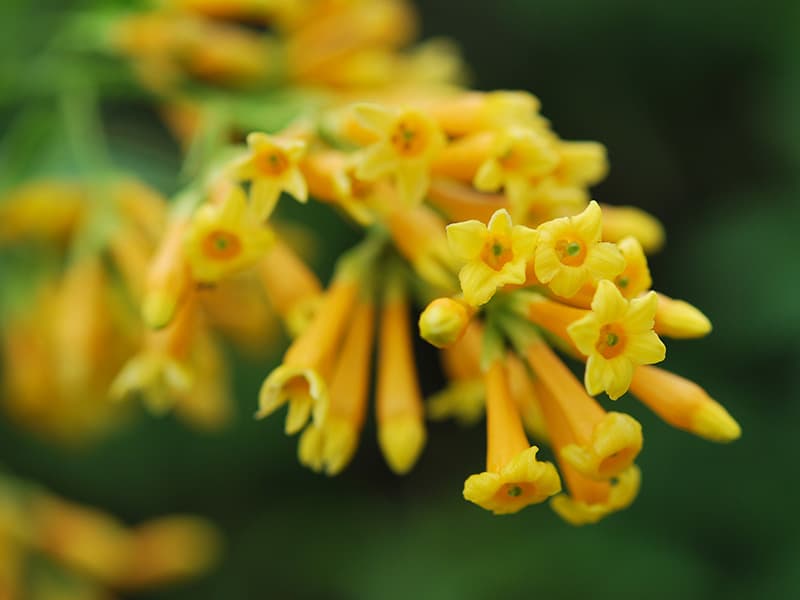
Pick non-alkaline and well-draining soil for your Cestrum plant. Yellow Cestrum is native to tropical regions and prefers warm temperatures. The blooms are heavily fragrant and tubular. Interestingly, the aroma intensifies during the night, and it is easy to recognize the strong citrus aroma.
Cestrum needs full sun in a colder region, and winter protection against frost. It looks beautiful when planted in the garden borders or mixed beds!
38. Bear’s Ear
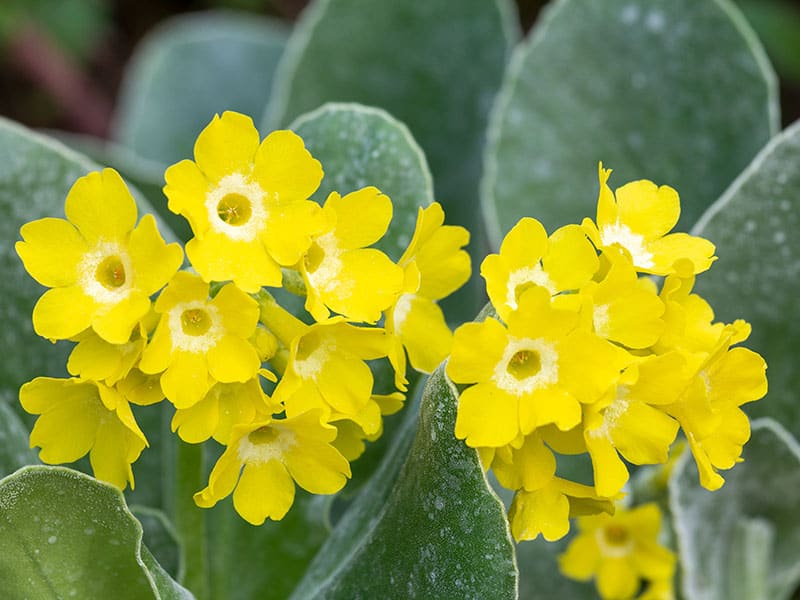
Bear’s Ear or Primula Auricula is a charming plant that blooms in spring. It is the perfect plant to grow in terra cotta pots on the patio. Bear’s Ear needs a lot of moisture. Adding grit will help the soil to stay moist, and compost will boost the nutritive value of the soil.
Cool, airy soil and slight shade are ideal for Primula Auricula.
39. Yellow Oleander
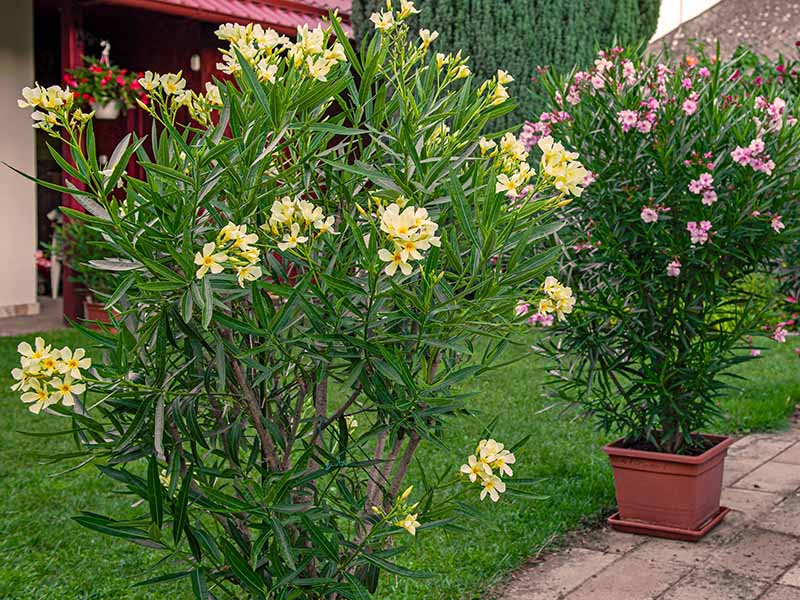
Yellow Oleander is not as common as the white variety, but it is equally beautiful. This tall shrub is native to Central America. Like other Oleanders, the yellow variety is also poisonous so keep that in mind when choosing a location.
Plant it away from the reach of pets and children, in an open space with full sun or partial shade. Yellow Oleander prefers warmth, so it might not survive cold temperatures in late fall and winter. If you live in an area with frost, you can grow Oleander in pots which you will keep indoors during winter.
40. Calendulas
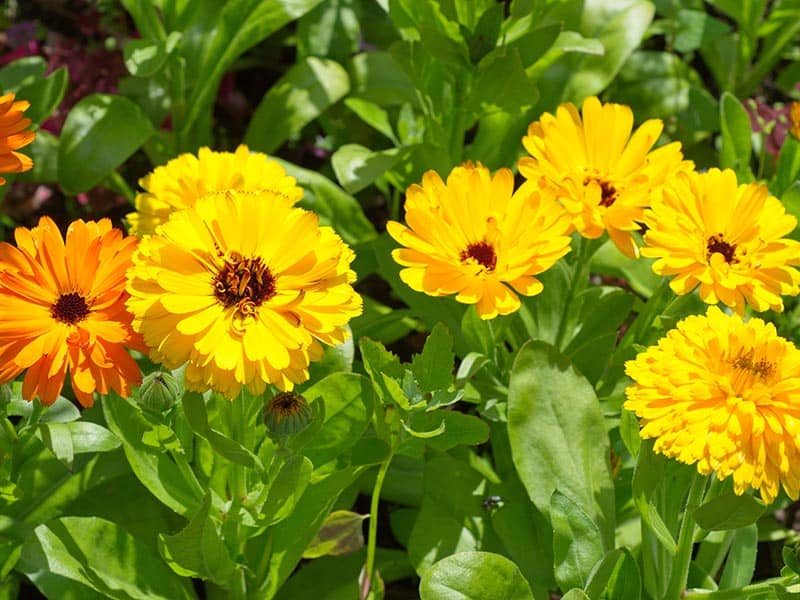
Yellow Calendulas are favorite inhabitants of summer gardens. They look attractive in flower beds or containers. Yellow Calendulas need an organic potting mix to thrive in a container and slightly more water than the varieties planted in soil.
Interestingly, potted Yellow Calendulas are edible! The yellow petals have a slightly bitter and peppery taste! You can add them to soups and salads for color and taste.
41. Lesser Celandine
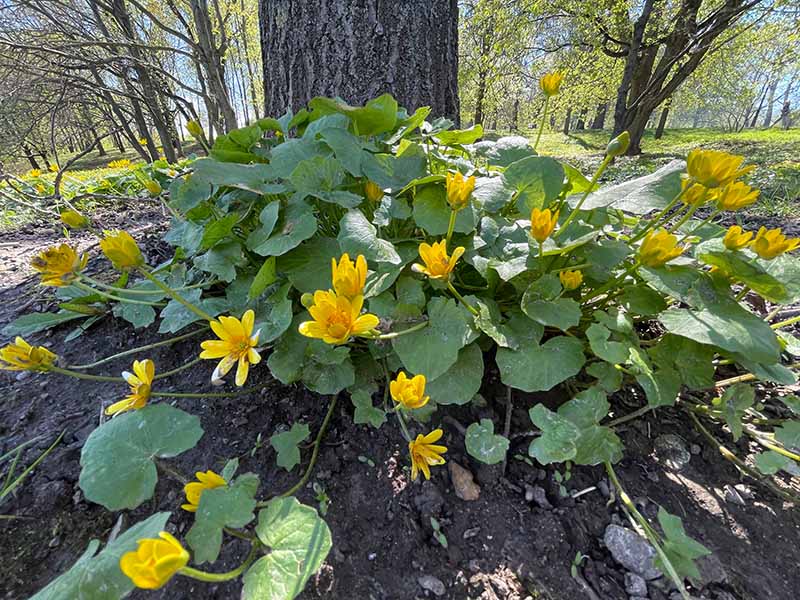
Ficaria Verna or Lesser Celandine is an attractive wildflower that grows from root tubers. You can plant it under tall trees where the Lesser Celandine will be exposed to partial sunlight.
The lovely yellow buttercup flowers are rich in pollen and attract pollinators. Lesser Celandine is a herald of spring and a great choice for borders and flower beds. It can get invasive in some climates, so monitor the plant before it takes over your garden.
42. Bird of Paradise
Bird of Paradise is a fascinating plant, with one of the most unusual blooms. It is a fast-growing shrub, native to Argentina and Uruguay. The trick to encourage dense growth is to prune the plant and to keep the irregular natural growth habit.
Yellow Bird of Paradise is cold-tolerant and can survive extreme heat and drought. It grows to its full potential in full sun, and it can reach ten feet when you plant it outdoors. Remember, all parts of Bird of Paradise are toxic.
43. Leontodon
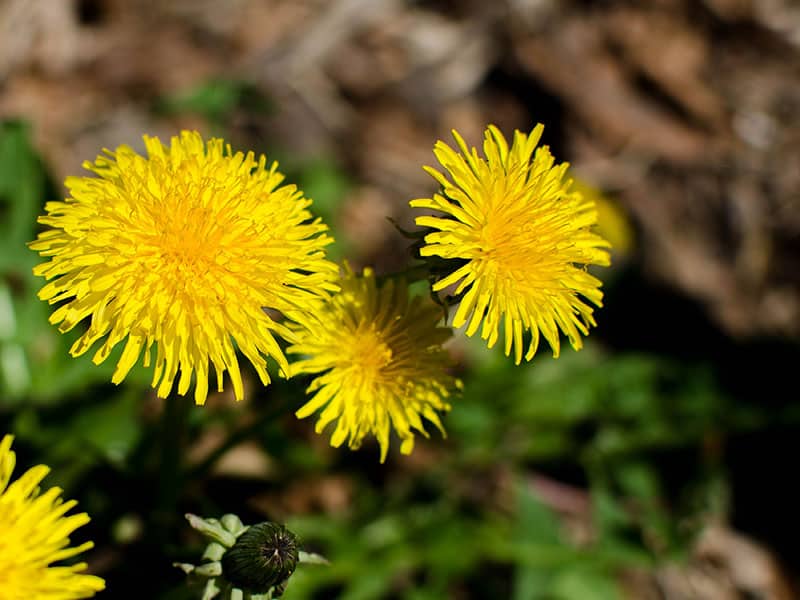
Leontodon is a solitary wildflower that blooms from May to October.
You can notice it in meadows, road verges, rock gardens, and quarries. Yellow Leontodon is often suppressed by more powerful species growing in rich soil. Still, many people like to see this wildflower in their gardens. It spreads by adventitious roots or wind-dispersed seeds.
44. Portulaca
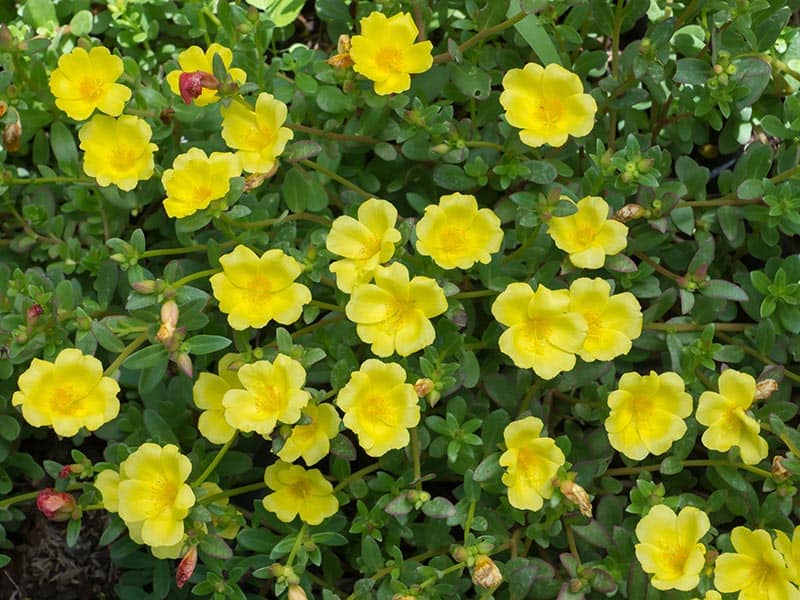
The ideal soil range for Portulaca is between 5.5 and 7.0 pH. If you have clay soil in your garden, you have better chances of growing Yellow Portulaca in pots where you can control the soil quality.
In general, Portulaca is an easy plant to grow. It doesn’t need a lot of fertilization. In fact, too much plant food will only boost foliar growth and reduce the blooms!
Portulaca is also a self-cleaning plant, so dead-heading isn’t required!
Yellow Flowers For Every Season
Mother Nature did an excellent job in creating the range of yellow flowers! They come in all shapes and sizes, and you can find varieties for every season! I like the yellow Gerbera Daisies and Bird of Paradise. Both are perfect in various floral arrangements and look magnificent in pots and soil.
Which type of yellow flower is your favorite? If you like to read more lists like this, come back!
